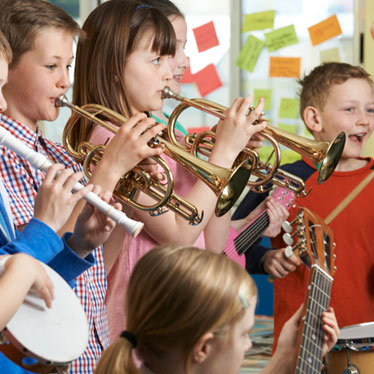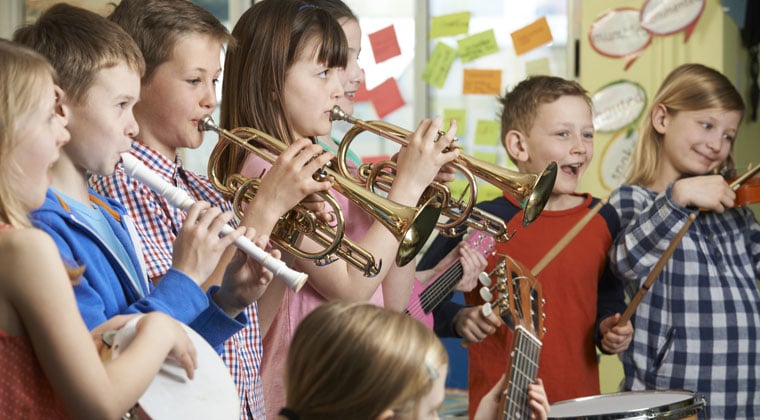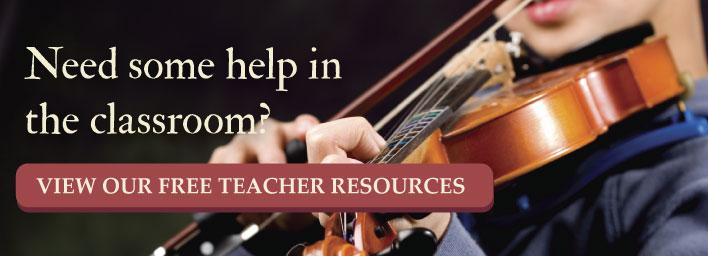
 Teaching the elements of music involves instructing students on how pitch elements, those that pertain to sounds, and time elements work together to create a unified piece of music. However, before you can explain how these elements work harmoniously (terrible pun intended), your students must first understand the basic elements themselves. Tempo is classified under timing, because it refers to the speed of a musical piece.
Teaching the elements of music involves instructing students on how pitch elements, those that pertain to sounds, and time elements work together to create a unified piece of music. However, before you can explain how these elements work harmoniously (terrible pun intended), your students must first understand the basic elements themselves. Tempo is classified under timing, because it refers to the speed of a musical piece.
Yet, unlike rhythm, the tempo in music is changeable. Certain measures, phrases, and sections of a single piece of music may have a variety of tempos, and learning to recognize the notation (or markings) used to indicate those changes is an important skill for young musicians to acquire.
Basic Concept and Definition
Tempo is how fast or slow the music is (or should be), and can be measured or indicated in two different ways. You may want to explain it like this: while the time signature tells the player how the placement of the sounds occur in the piece, the tempo tells you how they should sound in relation to real time. For example, you can sing “The Farmer in the Dale” really fast and finish in one minute, or really slow and drag it out for half-an-hour.
Tempo is measured using metronome markings, or indicated using specific words above or below the staff. Metronome markings are listed at the beginning of a piece of music and are similar to the top number on the time signature, but rather than beats per measure, it is used to indicate the number of beats per minute. It is written as an equation relative to the time signature. For instance, in common time, the metronome mark may appear as a quarter note equaling some number. The number tells you how many quarter notes (beats) are played in one minute. And although you can estimate it using a clock, the most reliable method is to employ a metronome—a timing device that displays the beat-per-minute tempo with either a small clicking sound or a pulse of light.
Italian terms are used to indicate when the tempo changes during a piece of music, and they are more subjective, which means that the musician gets to choose exactly how fast or slow to play.
Activities
Any age students can easily recognize the fundamental differences in tempo through listening and discussion activities, but with older groups, you may want to introduce some of the most common terms and their respective meanings, as well as how to interpret metronome markings. These ideas can help you teach the element of tempo.
Materials: You’ll need to gather a number of auditory examples and their sheet music, and develop some worksheets that your students can use to learn various common terms that indicate tempo. You may also download free tempo worksheets and similar music classroom resources here.
Tempo Terms
Procedure: Begin by explaining to your students that tempo refers to how fast or slow a piece of music is played. Briefly discuss some of the most basic terms used to indicate tempo such as:
- Grave—pronounced “GRAH-vey” which means very slow, sedate and solemn
- Largo—slow and broad
- Andante—pronounced “on-DON-tay” indicates medium slow, like a ‘walking’ pace
- Moderato—is moderate, medium tempo
- Allegro—pronounced “uh-LAY-grow” means fast
- Presto—very fast
You may also include other Italian terms that are often combined with these, like:
- (un) poco—means a little, pronounced “oon POH-koe”
- Molto—a lot
- Piu—means more, pronounced “pew”
- Meno—less, pronounced “May-no”
You can combine these terms to create phrases that the students can use when describing or recognizing tempo markings within, and at the beginning of a piece of music.
Play your examples, discussing each one using specific terms and have your students explain how the different tempos employed effect the overall sound and feeling the music creates.
Gradual Changes in Tempo
For this listening exercise, explain to students that there are times when a gradual changes in tempo are needed within the piece, and these changes also have specific terms that are used to tell a musician how to perform it. Although many of these terms are more appropriate for older students, tempo indicators (and their respective abbreviations) to explore include:
- Accelerando—(accel.) means to accelerate, get faster
- Ritardando—(rit.) means that the tempo is slowing down
- Ritenuto—(riten.) slower
- Rubato—simply means allowing the tempo to increase or decrease in a manner that emphasizes the phrasing
- Tempo I—means to return to the original tempo
Use the same procedures to demonstrate the changes in a single piece of music. Have the students listen and identify where they happen, as well as discuss the impressions created.
By teaching students the elements of tempo, you help develop their overall understanding of the way music elements work together to create feelings and impressions. These and other listening exercises will lay the foundation for future compositions and better performances.

